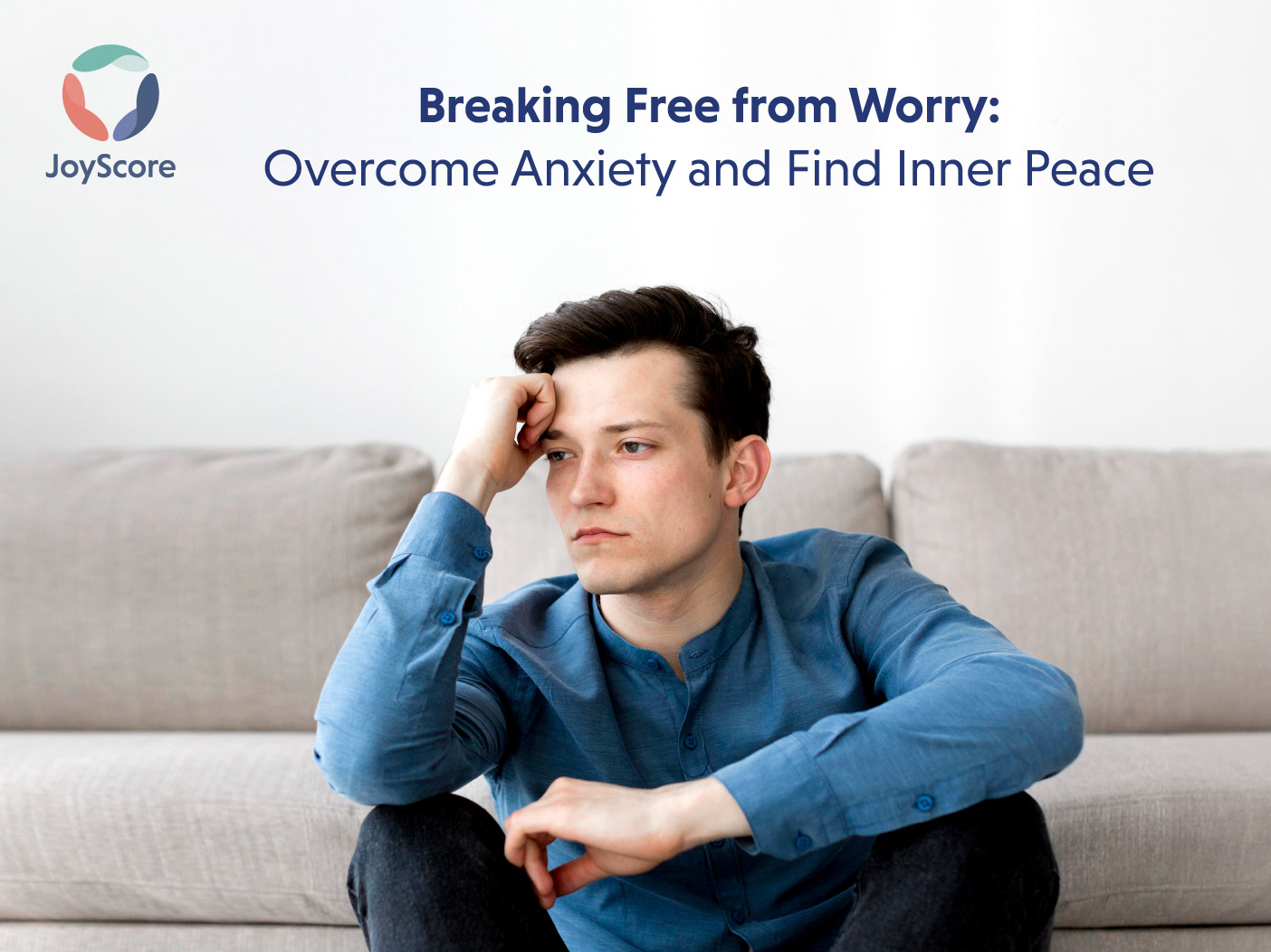Do you find yourself constantly worrying about everything? Do worst-case scenarios consume your thoughts? Excessive worrying can be overwhelming and can significantly impact your daily life too. It’s important to recognize that you’re not alone in this struggle. Anxiety disorder affects millions of people worldwide. However, there are effective strategies to manage and overcome this condition. In this comprehensive guide, we will explore the causes and psychological effects of excessive worrying, understand why it’s challenging to break free from this cycle and provide practical tips to help you stop overthinking and regain control of your life.
What is an Anxiety Disorder?
An anxiety disorder is a diagnosable medical condition characterized by persistent and excessive worry and fear. It goes beyond normal concerns and significantly affects a person’s thoughts, emotions, and behaviors. Generalized Anxiety Disorder (GAD), Panic Disorder, and Obsessive-Compulsive Disorder (OCD) are a few examples of different types of anxiety disorders. These conditions can profoundly impact an individual’s mental and physical well-being, as well as their ability to function in various aspects of life, including work, relationships, and self-care.
The Psychological Effects of Excessive Worrying
When we worry excessively, our minds become consumed with negative thoughts and worst-case scenarios. This constant state of worry triggers a stress response in our bodies, activating the sympathetic nervous system, also known as the “fight or flight” response. As a result, we may experience symptoms such as increased heart rate, rapid breathing, sweating, and gastrointestinal distress. These physical manifestations of anxiety can further fuel our worries and create a vicious cycle of fear and stress.
The Impact of Worrying on Our Daily Life
Excessive worrying can have a detrimental impact on various aspects of our lives. It can interfere with our ability to concentrate, make decisions, and perform daily tasks effectively. It may also disrupt our sleep patterns, leading to fatigue and decreased productivity. Furthermore, chronic anxiety can strain relationships and isolate individuals, as the constant worry and fear can make it challenging to engage in social activities and maintain healthy connections with others.
Why is it hard to stop worrying?
Breaking free from the cycle of excessive worrying can be challenging. Understanding the underlying reasons why it’s difficult to stop worrying is crucial to developing effective strategies for managing anxiety disorder.

Common Worries and Reasons for Worry
Worries can stem from various sources, including personal experiences, environmental factors, and societal pressures. Some of the most common worries include health, relationships, finances, work, and the future. These worries often arise from a desire to anticipate and control potential negative outcomes. However, dwelling on these worries only intensifies our anxiety and prevents us from fully engaging in the present moment.
The Cycle of Overthinking
Overthinking is a common characteristic of anxiety disorder. It involves repetitive thoughts and analyses of past events or future scenarios, often focusing on negative outcomes. The more we ruminate and overanalyse, the stronger the grip of anxiety becomes. This cycle perpetuates itself, leading to an increase in worry and a decrease in overall well-being.
The Fear of Uncertainty
One of the primary reasons it’s challenging to stop worrying is the fear of uncertainty. We often seek certainty and control in our lives, and uncertainty can trigger anxiety and fear. The inability to predict or control future events can leave us feeling vulnerable and anxious. However, it’s important to recognize that uncertainty is an inherent part of life, and learning to embrace it can help alleviate excessive worrying.
Effective Strategies to Overcome Anxiety Disorder
While overcoming anxiety disorders requires a comprehensive approach and professional help, there are several strategies you can implement to manage and reduce excessive worrying. These evidence-backed techniques can help you regain control over your thoughts and emotions, leading to a more peaceful and fulfilling life.
1. Practice Mindfulness and Relaxation Techniques
Mindfulness is a powerful technique that can help break the cycle of worry and bring your attention to the present moment. By focusing on your breath, sensations, and thoughts without judgment, you can create distance from your worries and reduce their emotional impact. Incorporating relaxation activities such as yoga, walking, or taking a bath can promote a sense of calm and well-being. Engaging in activities you enjoy releases endorphins, which counteract stress and anxiety, too.
2. Journaling: A Tool for Letting Go of Worries

Writing down your worries can be a cathartic and effective way to release them from your mind. Journaling allows you to confront your anxious thoughts and gain perspective on their validity. Take dedicated “worry time” to write down all your concerns and then reflect on them objectively. Ask yourself critical questions, such as the likelihood of these worries coming true or if there are alternative perspectives or outcomes. This process can help reframe your thinking and diminish the power of your worries
3. Identify and Manage Triggers
Understanding your triggers is crucial to managing anxiety disorders. Pay attention to situations or activities that consistently heighten your worries or could induce panic attacks. It could be scrolling through social media, engaging with negative people, or stressful environmental factors. Once you identify these triggers, you can make proactive decisions to avoid or modify them. Setting boundaries, implementing screen time limits, and surrounding yourself with positive influences can significantly reduce anxiety and stress.
4. Harness the Power of Breathing Techniques
Breathing techniques are an effective tool for calming the mind and activating the body’s relaxation response. Diaphragmatic breathing, also known as belly breathing, involves taking deep breaths originating from the diaphragm. This technique helps slow the heart rate, reduce blood pressure, and promote a sense of calm. Other techniques, such as 4-7-8 breathing and pursed lip breathing, can also be beneficial in alleviating anxiety symptoms.
5. Adopt a Healthy lifestyle.

Our lifestyle choices can significantly impact our mental well-being. Consuming excessive caffeine and alcohol has been linked to increased stress and anxiety. Limiting or eliminating these substances from your diet can have a positive impact on your mental health. Additionally, maintaining a balanced diet rich in fruits, vegetables, and whole grains can stabilize blood sugar levels and promote emotional well-being. Regular exercise, adequate sleep, and practicing self-care activities are also essential components of a healthy lifestyle that can help manage anxiety disorders.
6. Seek Professional Support.
If your anxiety disorder is significantly impacting your daily life and your self-care efforts are not sufficient, it’s crucial to seek professional help. A qualified mental healthcare professional, like a psychiatrist, can provide an accurate diagnosis and develop a personalized treatment plan. Treatment options may include a combination of medication and talk therapy, such as cognitive-behavioral therapy (CBT). These interventions can help reframe negative thinking patterns, develop coping strategies, and provide the necessary support to manage anxiety disorder effectively.
Conclusion
Excessive worrying can be debilitating, affecting various aspects of our lives. However, by implementing effective strategies and seeking professional support, it is possible to manage and overcome an anxiety disorder. Remember, you are not alone in this journey, and there is hope for a brighter, worry-free future. Embrace mindfulness, practice relaxation techniques, identify triggers, adopt a healthy lifestyle, and seek the guidance of a mental health professional. With the right tools and support, you can regain control over your thoughts, reduce anxiety, and lead a fulfilling life.



